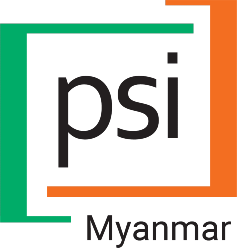JULY 1, 2024
A DIGITAL ECOSYSTEM FOR COMMUNITY-DRIVEN INTEGRATED TUBERCULOSIS SCREENING AND TESTING SERVICE DELIVERY
By Zayar Kyaw, Head of Health Security & Innovations, Population Services International Myanmar, and Bram Piot, Project Director, PSI
In Myanmar, clients of community pharmacies who present with presumptive tuberculosis (TB) symptoms may receive screening and then be encouraged to go for confirmatory testing. But without formal linkages that connect consumers to TB testing and treatment sites, and a lack of effective referral systems and follow-up services, health consumers often do not go beyond the preliminary screening.
Put simply: health care providers need a tool that makes it easy to refer clients screened for TB to a clinic or pharmacy that has consumers’ records in hand. That’s key to ensuring that patients receive quality and continuous care, no matter their starting point.
That’s why Population Services International (PSI) Myanmar designed a digital TB referral and follow-up system that captures the consumer information so that health workers, at any stage of the consumers’ health journey, to follow up accordingly. The system combines the user-friendliness of a social media chatbot with the powers of DHIS2 – all intended to make it easier for health workers to deliver and health consumers to access TB care. In addition, by providing near-real time screening and testing data, providers contribute to improved communicable disease surveillance, enabling early detection of and rapid response to disease outbreaks.
HOW IT WORKS:
- Community pharmacies screen clients that present with possible TB symptoms
- Pharmacies communicate referral information to designated community mobilizers through a user-friendly interactive chatbot built on the Viber messaging platform, combined with a DHIS2 tracker mobile application used by the community mobilizers.
- Client information, collected with consent from the patients, is provided in a structured, secure manner to the local health workers who then engage directly with the patient for testing and treatment services. The DHIS2 tracker program allows for easy enrollment and provision of services over the continuum of care.
- Program managers can access performance metrics and other strategic information through real-time monitoring dashboards through DHIS2 and PowerBI, enabling decision-makers at all levels to make course-corrections as needed to further improve referral success rates.
IMPACT
The combination of these digital tools allows pharmacies to share real-time referral data with community mobilizers, resulting in improved follow-up with clients for referral support, and enabling them to quickly identify missing referrals or patients that need further follow-up support. As of December 2022, PSI and its independent network member Sun Community Health introduced the digital referral and follow-up system to 469 pharmacies and 19 community mobilizers across Myanmar’s Bago East and West regions. Using the solution, 268 pharmacies referred to 1,630 possible TB cases, with 99 percent of them being contacted by community mobilizers for referral facilitation . Of the possible cases, 32 percent were found to be positive for TB and were subsequently enrolled into a treatment program.
And the biggest perk: engagements sourced from the system’s consumer-facing chatbot reactivated numerous pharmacies that were previously not referring patients, as they too began referring cases for testing.
WHAT’S NEXT
PSI and partner Sun Community Health plan to expand the digital referral system to other areas of the country and are looking at engaging additional commercial private pharmacy chains. Pending a return to a more stable political situation, PSI will work with the Ministry of Health to share referral information directly for improved surveillance and coordination.
To read more about how PSI’s digital solutions make it easy for private sector healthcare providers to report communicable disease data, read our recent blog piece on digital tools for improved health security.
